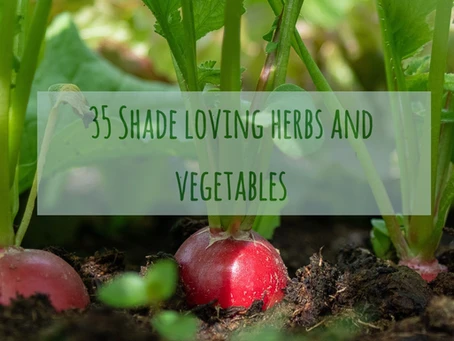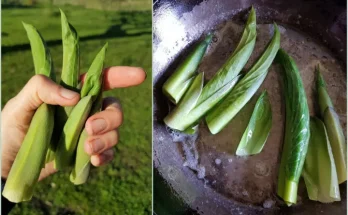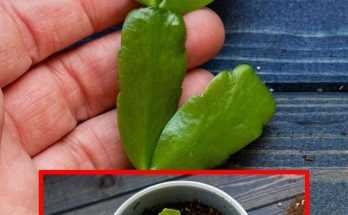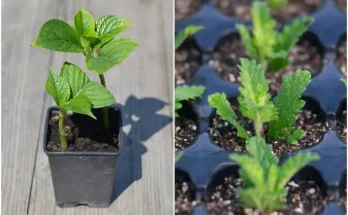If you have a shaded garden or balcony, you would be
forgiven for thinking you cannot grow an abundance of fresh herbs and vegetables. After all, nearly every grow guide and gardening book mentions the term ‘full sun’ for most herbs and vegetables. In this article we are going to explore what vegetables and herbs you can grow in varying levels of shade. The answer might surprise you!
How to grow herbs and vegetables in shade
Growing in herbs and vegetables in shade is largely similar to growing in normal conditions. There are however a few key steps to think about when planting in a shaded area:
-
Where possible start your seeds in a sunny position. Shaded areas can often delay germination for many seeds as the temperatures are normally much cooler. Once the seed germinates the seedling is vulnerable to slow or leggy growth in shade. A sunny facing window is the ideal place to start off your seeds.
-
Select the correct herbs and vegetables varieties. Unfortunately some plants will not grow in shade. It is pointless trying to plant fruiting vegetables such as tomatoes, cucumbers and aubergines in shade. Identify the amount of sunlight your plot gets and using the below guide select the appropriate vegetables and herbs.
-
Use high quality peat free compost. This gives the sun deficient plants the best chance of success.
-
Keep a close eye on your crops. If a plant is showing signs of weak growth, pest damage or just is not healthy, you may need to move it to a different part of the garden or plot. This could be a temporary move to revive the plant or a permanent move.
-
Keep a log or record of your successes and failures. The best way to understand what works on your plot is trial and error. Keep a list of vegetables and herbs which did well and where they were growing.

What can I grow in full shade?
Full shade or deep shade is no direct sunlight to less than two hours of direct sun light per day. This is normally found under dense tree cover or in cities where there are high rise buildings. Full shade is the most challenging space, where few vegetables or herbs will grow. In these light conditions you need to do everything you can do to maximise the levels of sunlight. This could be painting walls white and removing leaves or branches from overhanging trees. It is also worth selecting green varieties over coloured varieties as the generally require higher light levels.
Best herbs and vegetables to grow full shade:
-
Pea shoots: These are the baby shoots from regular pea plants. Their fast harvest time makes them a viable option for full shade. They make an ideal garnish to any home cooked meal or salad.
-
Mizuna: Hardy oriental salad crop
-
Mibuna: Another hardy oriental salad crop
-
Mint: Mint is arguably the hardest herb, make sure to plant it in a pot or container as it will spread like wild fire in open ground.


What can I grow in moderate shade?
Moderate shade in my opinion can be defined as two to four hours of direct sunlight. Only a few more hours of sunlight a day than full shade but the list of viable herbs and vegetables is dramatically longer. Be wary though, this is still not ideal growing conditions for many of these crops. They are likely to be much slower growing and smaller then if they were grown under the correct light levels. Having said that do not be disheartened, you can still achieve great results with this level of shade!
Best herbs and vegetables to grow in moderate shade:
-
All of the plants from the full shade section
-
Swiss Chard: A beautiful leafy vegetable which is not out of place in a flower border. It comes in beautiful rainbow colours that will break up the levels of green found in shaded plots. Full sun can cause chard to turn bitter making it ideal for shade.
-
Spinach: One of the hardest and easy to grow veggies you can grow.
-
Kale: A fantastic crop, some varieties can even be grown overwinter.
-
Salad crops and loose leaf lettuce: Pick hardy salad crops such as rocket. Salad crops can be quick to bolt, this is where the plant goes to flower in order to set seed. Growing in a shaded area can help reduce this risk.
-
Herbs such as: Chives, oregano, coriander and parsley.


What can I grow in filtered shade?
Filtered shade is normally shade cast thought the branches of a tree or bush. Often a single tree can act as a help rather hindrance as it can give crops a break from the direct summer sun. The list of what we can grow here dramatically opens up. This is where I recommend trial and error and figuring out what works for your space as filtered shade can vary from plot to plot.
Best herbs and vegetables to grow in filtered shade:
-
All of the plants from full shade and moderate shade sections.
-
Spring onions: Great for small space gardening
-
Broad beans: Possibly the hardest of the beans, they can be started overwinter to give an earlier crop.
-
Turnips: Turnips will tolerate shade but expect smaller harvests. This is not always a bad thing as that is the size where they taste the best.
-
Beetroot: Like turnips expect a smaller harvest. Beetroot have a tendency to develop a woody taste when they get too big. Growing in shade will help prevent this.
-
Coloured salad crops: While the green varieties of salad crops can tolerate a higher level of shade the coloured varieties can now start to be introduced.
-
Herbs such as: Rosemary, bay, sage and dill.


What can I grow in light/partial shade?
Light shade or partial shade is areas that get four to seven hours of sunlight per day during the summer months. This is often caused by distant structures or trees that cast long shadows at sunset and sunrise. Your options really start to open up here and in my experience many herbs and vegetables actually prefer partial shade to full sun during the hot midsummer months. Some of the below fruiting crops might be less productive but that is not necessarily a bad thing. Plants such as courgettes will produce a glut if grown in optimal conditions and a bit of shade can help to slow this!
Best herbs and vegetables to grow in light shade or partial shade:
-
All of the above crops from full shade, moderate shade and filtered shade.
-
Radishes: The fastest of the root vegetables to grow, from seed to harvest can be as short as a month. Growing in partial shade can slow this growing time but will help reduce bolting.
-
Carrots: For years I have grown my carrots in partial shade, they will grow fine and it frees up full sun positions for plants which really need it.
-
Potatoes: Potatoes are ideal for growing in containers in light shade. While they will do better in full sun, rows and rows of potatoes take up too much variable full sun space.
-
Peas: Peas will happily grow in partial shade but they are likely to grow slightly slower than those grown in full sun.
-
Mange tout
-
Sugar snap peas
-
French bean: If space is limited you can grow dwarf varieties. However, growing climbing varieties may allow the plants to reach more sunlight.
-
Runner bean: Very similar to French bean, try growing red flowing varieties as they can be more forgiving then white flowering varieties.
-
Courgette: Courgette will grow better in full sun but as they are such vigorous croppers you will still get a fantastic crop growing in partial shade.
-
Winter squash: A great option as they will easily store over winter months supplying you with fresh produce.
-
Kohl-Rabi: Kohl-Rabi will grow well in partial shade but just be careful of pests, caterpillars and aphids love this plant.


Advantages of growing in shade
Growing your crops in shade can actually be quite beneficial. We all dream of a south facing plot, baked in sun all day long and as a result we often overlook the advantages of planting in shaded areas. When you are growing in a shaded area chances are you will be utilising containers and raised beds. During the hot dry summer months container gardening needs constant daily watering. Growing in the shade can help reduce this watering which not only conserves water but will save you a lot of time and effort throughout the summer. Another knock on effect of this is the plants are less likely to bolt. Plants bolt when they are stressed, this is often caused by irregular watering or extreme temperatures. Growing in shade often keeps more consistent growing conditions which dramatically reduce bolting.

Shaded areas are often left abandoned in gardens and plots. By trying to grow in these shaded spots you are making more of your land productive, thus boosting the size of your harvests.
Many plants will actually taste better when grown in shade. A great example of this is Swiss chard. If chard is grown in full sun it can develop quite a bitter taste. Vegetables such as courgette can often crop too well in full sun leaving you with tonnes of waste. This is dramatically reduced when grown in shade.
Disadvantages of growing in shade
While there are many advantages to growing in shade there are quite a few disadvantages you need to be aware of. Pests such as slugs will thrive in shaded areas as they are often damp. This is easy to stop as long as you keep on top of it. Hand remove slugs or encourage hedgehogs, birds or frogs into the garden to help assist with the pest control.

Crops grown in shade will grow slower than in full sun. The time it takes to harvest is not necessarily the problem here. Slugs and other garden pests will cause far more damage to slow growing distressed plants. This combined with higher levels of pests in shade can be a recipe for disaster if it is not well controlled.
The plants grown in shade are often much smaller than plants grown in full sun. This means the ground area is far less productive leaving to a smaller harvest. For the vast majority of people this will not be an issue as you will still grow enough for home cooking.
Shaded areas will often have a much shorter growing season and are often only viable in midsummer when the sun is at its highest.
Possibly the biggest disadvantage of growing herbs and vegetables in shaded areas is the lack of choice. You will struggle to grow any exotics of soft fruiting vegetables such as tomatoes. If you have full sun it is easy to create shade for plants which prefer shade but it is much harder to remove the obstacles creating shade.
Final thoughts
This article is written to inspire you to try to grow in shade rather than to scare you. Yes, it is harder, you will encounter more problems and there will be more failures, but with a little bit of work you can turn a non-productive wasted patch of land into productive land. I always think the produce you have to work harder to grow always taste the best anyway!



